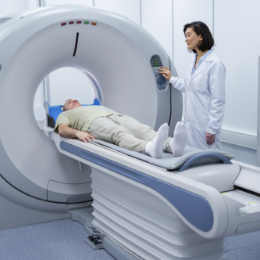Interventional Radiology
Interventional radiology, or interventional radiology, is an independent medical specialty separated from radiology after it was a sub-specialty in it. Years ago, reliance on this science began to diagnose and treat many diseases in all parts of the body, through some techniques that cut the skin with the aim of Reducing the risks to patients and working to improve their health.
How the interventional radiology system works
The basis of interventional radiology was built on imaging the human body, through specialized devices so that the body is imaged to reach the location of the tumor,
Then entering it, whether through veins or arteries, or by entering some organs such as the “liver” using catheters or thermal frequency sensors, then carrying out a process similar to the process of navigation inside the patient’s body, until the goal is reached, whether it is a tumor, arterial malformation, or Other than that, the X-ray work system relies on the presence of advanced diagnostic X-ray devices, such as CT scans, sound waves, and catheters. It also needs precise tools such as thermal frequency sensors, medical microwaves, and arterial and venous catheters.
Diseases treated by interventional radiology
Interventional radiology contributes to the treatment of many diseases in various locations in the body, as it treats:
1- Vascular diseases
2 Tumors
3 Neurological diseases
4- Hepatobiliary disease
5- Women's diseases
6 Kidney diseases
